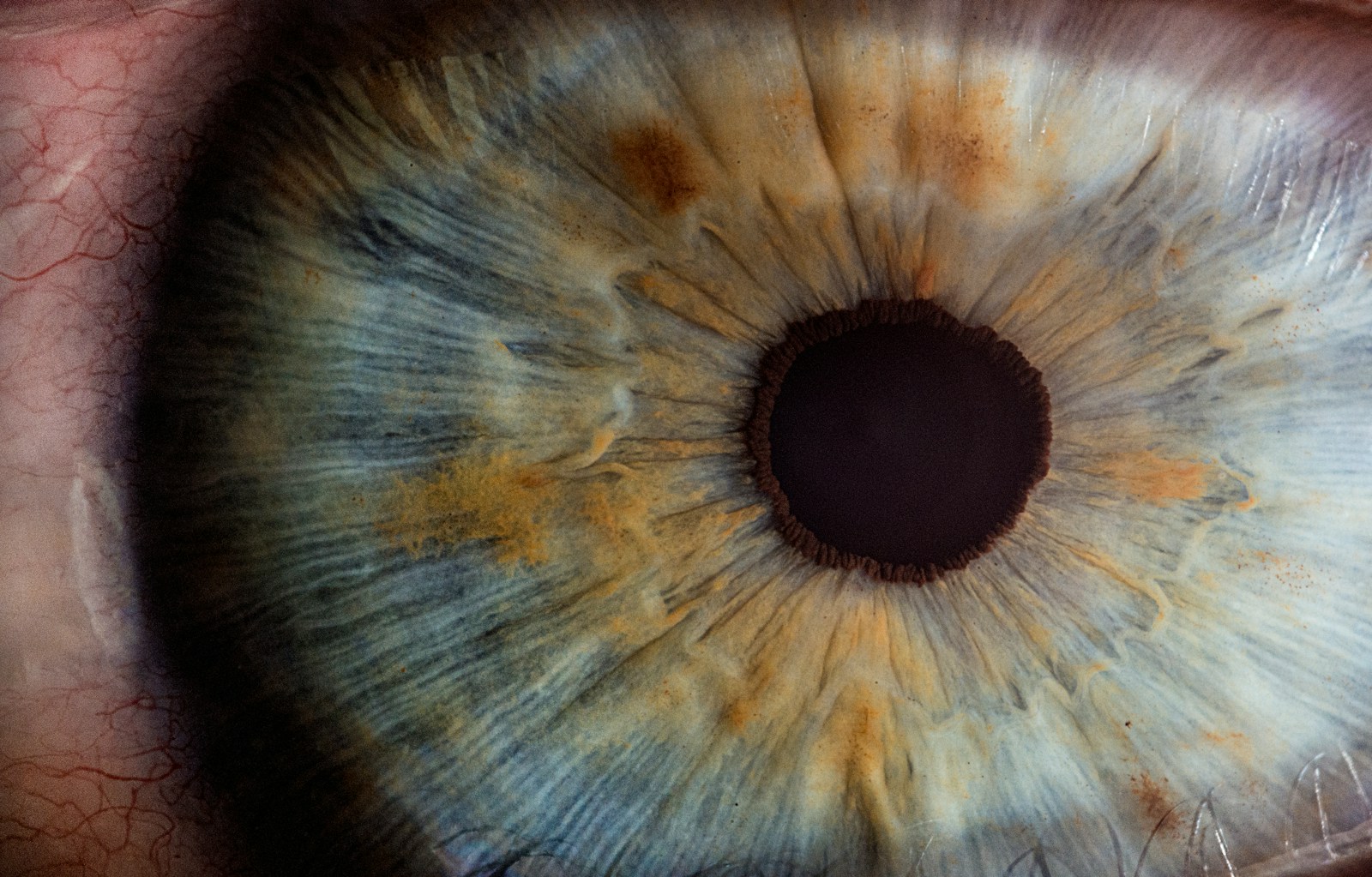The human eye is estimated to have a resolution of 576 megapixels (18K Resolution), which is higher than any real-world camera. However, the eye’s resolution drops to 5–15 megapixels in a single glance because of flaws like a blind spot and the fact that high resolution is only visible in the center of the eye’s field of view. Distance also plays a role in resolution.
Understanding the limits of human vision is a fascinating topic that has been studied by scientists for centuries – but since the computer/tech revolution, we’ve really started looking at the role our eyes play in a world filled with screens and resolutions. The eye is a complex organ capable of distinguishing fine details, but it does not measure vision in pixels as digital displays do. This friction between biological and digital interpretation of resolution provokes questions about what exactly the human eye can perceive. The comparison between the eye’s capabilities and digital technology leads to a discussion about the highest resolution our eyes can discern.

Measuring visual acuity involves considering factors such as the density of photoreceptors in the retina and the eye’s response to light and detail. Understanding how these elements translate into everyday experiences, such as watching a high-definition screen, offers insight into the strengths and limitations of our visual system.
Here’s a table explaining the concept of the highest resolution of the human eye. Due to the complex way the eye works, there isn’t one single number answer:
| Aspect | Description |
|---|---|
| Theoretical Maximum Resolution | Based on the spacing of photoreceptors in the eye’s fovea, the theoretical maximum is around 0.4 arcminutes per line pair. This translates to roughly 576 megapixels in terms of digital camera comparison. |
| Practical Resolution in Central Vision | When the eye is focused on a single point, the most detailed vision is in the fovea. This translates to roughly 7-15 megapixels of resolution. |
| Peripheral Vision | Resolution drops drastically outside the central fovea. Our peripheral vision helps us detect motion and wide objects, but not fine detail. |
| Dynamic Vision | The eye isn’t static! It constantly moves and scans, creating a composite image in the brain that appears much higher resolution than a single snapshot. |
Important Considerations:
- “Megapixel” equivalent is misleading: The eye doesn’t process information the same way a digital camera does.
- Lighting matters: Resolution is best in bright conditions and decreases in low light.
- Individual variation: Visual acuity varies between people.
Beyond Megapixels
When we talk about image clarity, we often use terms like “pixels” and “resolution.” These metrics are crucial for understanding digital images, but they don’t fully capture how we see the world.
Pixels and Pixel Density
Pixel density, measured in pixels per inch (PPI), tells us how many tiny dots of light make up an image on a screen. Higher PPI usually means a sharper image, as the individual pixels become less noticeable. This is why high-resolution displays, like those on modern smartphones, appear so crisp and clear.The Limits of Human Vision: It’s Not Just About Pixels
While digital images are made up of pixels, our eyes don’t work the same way. We don’t have a fixed number of “pixels” in our vision. Instead, our ability to see detail depends on factors like the distance from the object, lighting conditions, and the health of our eyes. So, even if a screen has an incredibly high resolution, we might not be able to appreciate all that detail if we’re too far away or the lighting is poor.
The Role of the Brain
Vision isn’t just about what our eyes capture; it’s also about how our brain interprets that information. Our brain constantly processes visual data, filling in gaps, making sense of patterns, and creating a seamless visual experience. This is why we can sometimes see details or movements that are technically beyond the resolution of our eyes.
Aging and Eye Health
As we age, our visual acuity naturally declines. The lenses in our eyes become less flexible, making it harder to focus on close objects. The number of light-sensitive cells in our retinas also decreases, affecting our ability to see in low light and perceive fine details. This means that even with the highest resolution screens, older individuals might not experience the same level of clarity as younger people.
While high-resolution screens can provide a stunning visual experience, prolonged exposure can also strain our eyes. It’s important to take breaks, adjust screen brightness and contrast, and maintain a comfortable viewing distance to protect your vision.
Key Takeaways
- The eye perceives detail distinctively compared to digital screens.
- Visual acuity is influenced by the density and arrangement of retinal cells.
- There is a quantifiable limit to what resolution our eyes can distinguish.
Anatomy and Physiology of the Eye
The human eye is a complex organ that integrates multiple structures to capture and process visual information. Each part plays a crucial role in how we perceive the world around us.
Retinal Structure and Photoreceptors
The retina is the light-sensitive layer at the back of the eye, home to millions of photoreceptors called rods and cones. Rods are responsible for vision at low light levels, while cones are active at higher light levels and enable us to see fine details and color. The fovea is a small pit in the retina packed with cones, allowing for sharp central vision.
Visual Pathways and Processing
Once light reaches the retina, it is converted into electrical signals that are transmitted through the optic nerve to the brain. The main visual processing occurs in the visual cortex, where neurons analyze the signals to create the images we see. This processing includes discerning edges, movements, and colors, contributing to spatial and depth perception.
Common Vision Conditions and Corrections
Conditions like myopia (nearsightedness), hyperopia (farsightedness), emmetropia (normal vision), and astigmatism disrupt how the eye focuses light. They can be corrected with glasses, contacts, or refractive surgery. These vision aids or procedures help refocus light onto the retina to improve clarity.
Visual Acuity and Resolution
Visual acuity is the eye’s ability to distinguish fine details, measured by the resolution at which two distinct points can be perceived. This is often quantified as the smallest arc minute detail that one can resolve, reflecting the angular resolution of the eye. Factors such as contrast and illumination play a role in the spatial resolution a person experiences.
Field of View and Blind Spots
The field of view encompasses the entire expanse of space visible at a given moment without moving the eyes, which includes peripheral vision. Each eye has a blind spot where there are no photoreceptors because the optic nerve exits the retina. However, our brains fill in the missing information, so we typically don’t notice the blind spot in our visual field.
Optical and Digital Technologies
Exploring the intricacies of image capture and display, this section navigates the comparison between cameras and the human eye, advances in screen technologies, and variables influencing the quality of the viewing experience.
Cameras Vs. Human Eye
Cameras, from the handheld to the high-grade, strive to mimic the human eye, yet there are clear differences. While a camera captures images using a set sensor size with a fixed number of pixels, the human eye’s resolution isn’t defined by pixels, but rather by the visual system‘s ability to distinguish details. High-end cameras may boast resolutions in millions of pixels; however, the eye’s perceived resolution integrates not only the density of cone cells in the retina but also factors like contrast and lighting conditions.
Screen Technologies and Evolution
Technological leaps in display, from the early days of cathode-ray tubes to the sleekness of LCD and OLED screens, have vastly changed how content is viewed. These advancements are measured in screen resolution and pixel density (PPI), with modern screens like 4K and 8K TVs packing pixels tighter for sharper images. As pixel density increases, so does the potential clarity of digital pictures, but this is influenced by screen size and viewing distance. 8K TVs have four times as many pixels as 4K TVs, enhancing the detail in every image.
Viewing Experience Factors
When considering the ideal viewing experience, various elements interweave to affect the final picture. The resolution of a screen, whether a TV or monitor, is only the starting point. The true visual experience is shaped by the interplay of pixel density, viewer’s distance from the screen, and visual angle. Content must be crafted specific to the display technology to maximize impact – for instance, detailed graphics for a high PPI monitor, or broad scenes suited to larger 4K screens. All these variables converge to define the digital visual experience, ensuring every picture is as close to the creator’s intent as possible.
Measuring and Interpreting Visual Resolution
Understanding visual resolution involves discussing how we measure and perceive the clarity of images, both digital and natural. This includes the density of pixels in digital displays, the abilities and limits of human vision, and the impacts these factors have on technology and its future.
Pixels and Pixel Density
When we talk about the clarity of a digital image on screens like smartphones or TVs, we’re usually referring to pixel density, measured in pixels per inch (PPI). Higher PPI means more pixels per inch, which usually translates to a sharper image. For example, a display that boasts 8K resolution has more pixels and, therefore, potentially more detail than a 4K TV.
Limitations and Perceptions of Resolution
Human eyes have their limits. While a camera might click pictures in millions of tiny points, known as megapixels, the highest resolution a human eye can perceive depends on many factors. Variables such as distance from the screen, lighting, and the visual acuity of the person’s eyes all play into how resolution is perceived. Despite high-resolution content, an individual’s vision can affect the interpretation of clarity.
Optical Illusions and Hyperacuity
Vision is more than just clarity. Sometimes, we perceive sharp edges or changes in light and shadow better than expected, an ability known as hyperacuity. This means our eyes can sometimes see fine details even beyond the limitations of traditional visual acuity, often exploited in optical illusions which trick our brains into seeing things that aren’t really there.
Economics of High-Resolution Technology
High-resolution technology isn’t cheap. Producing a panel with a significant number of pixels, like for an 8K TV, can drive the price up. On the market side, the value of investing in technology with higher resolution depends on the content available and whether consumers can really see the difference it makes.
The Future of Visual Resolution
The race for the crystal-clear picture is on. Companies invest in creating displays with more pixels, aiming to mimic the seamless detail we see in reality. However, as screen resolutions improve, the differences become less apparent. The future may pivot away from mere pixel count towards improving the various other aspects of our visual experience, like dynamic range and color accuracy.
Frequently Asked Questions
The FAQs below provide specific answers to common queries regarding the capabilities and limitations of human vision in relation to modern digital resolutions.
How many megapixels does the human eye have compared to digital resolutions?
Estimating the megapixel equivalent of the human eye is complex due to the non-uniform distribution of photoreceptors. It’s suggested that if the eye were a digital camera, it would have approximately 576 megapixels.
What are the limits of human visual acuity in terms of pixels?
Human visual acuity is around 1 arc minute. On a digital display, this means at normal viewing distance, screens with a density of 300 pixels per inch (PPI) are nearing the limits of what the average human eye can resolve.
How does an eagle’s vision compare to human vision in megapixel terms?
Eagles have vision that is both sharper and broader in the field of view than humans. It is challenging to quantify in megapixels; however, their eyes have more sensory cells, allowing them to see fine details at greater distances.
Is there a visual difference for humans between 4K and 16K resolutions?
While 4K resolutions provide a very detailed image for average viewers, 16K resolutions exceed the detail the human eye can perceive at typical viewing distances. Therefore, most people may not notice significant improvements with higher resolutions like 16K.
What is the maximum video resolution that the human eye can differentiate?
The upper limit of resolution the human eye can differentiate is subject to factors such as distance and individual visual acuity. For most people, a display with a resolution of about 8K is near the limit of what they can distinguish at a common viewing distance.
Can the human visual system perceive improvements in resolution beyond 8K?
Improvements in resolution beyond 8K may not be noticeable to the average human eye, especially when viewed at normal television viewing distances. The human eye’s ability to perceive such enhancements is limited by the density of rods and cones in the retina.







